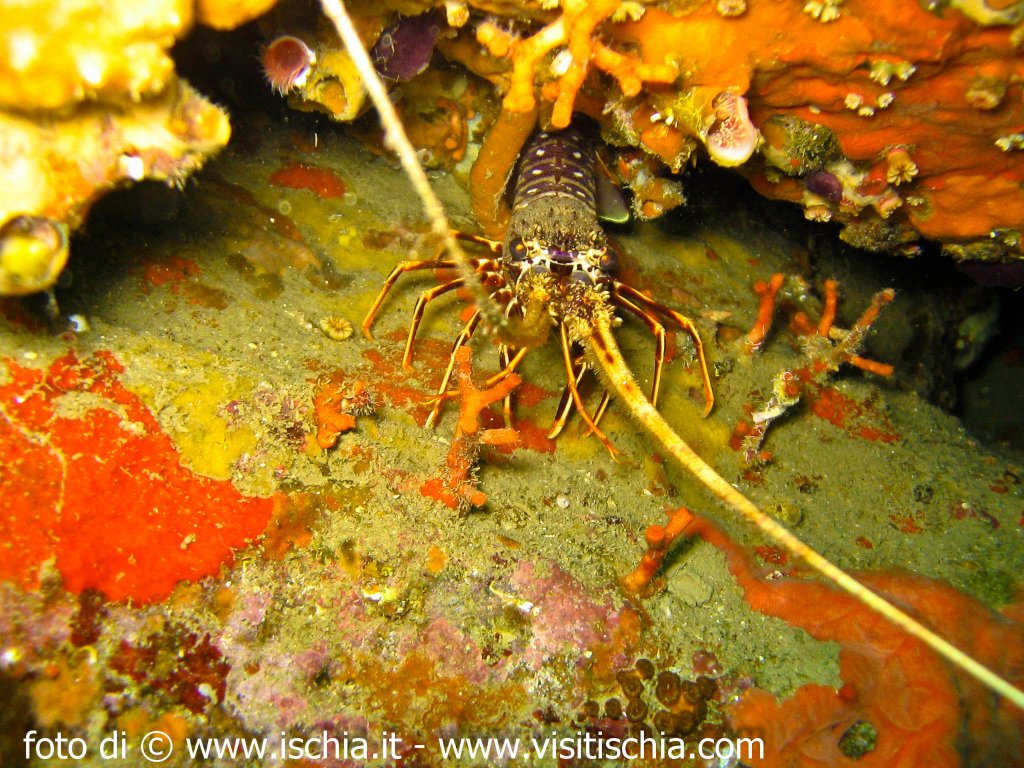Regno di Nettuno, the sea and its treasures

The sea is a resource to be protected, quiet heritage of animal and plant species, of which Man can admire its wonders, without undermining its delicate balance. Dream come true in the Gulf of Naples, in Regno di Nettuno, whose establishment is marked by a long legislative process, lasted about a decade and still being finalized: from the enactment of Law No. 394/1991 (the Framework Law on Protected Areas), to the feasibility study of the Anton Dohrn Zoological Station in Naples, until the regulations of June 5, 2008, which comes into effect the Ministerial Decree of 27 December 2007.
A place almost untouched, under the strict nature reserve areas, where it is forbidden to enter, or devoted exclusively to underwater sports with fishing, boating and water activities.
Three islands, Vivara, Procida and Ischia, characterized by particular traits having the same volcanic origin. There the smallest of the islands appears (Procida), with its typical half-moon shape, remembers the back of a dolphin, now uninhabited, but considered natural state reserve and Site of Community Importance and Special Protection Area, as described by De Lorenzo in 1905. “What remains without darkness and without mysteries, doubts and out of the eternal uncertainty of the scientific analysis, clear and transparent in the light of day, is the pure aesthetic vision of the crater of Vivara, which rising from the open sea with the harmonious forms and cliffs with shades of warm colours, that has expressed from its cove a green mantle of grass and plants, on which laughs a perpetual spring”. Among the “herb” it is impossible not to mention the famous Posidonia, marine plant that grows on sandy floors and the nice exotic crab, Percnon gibbesi, spotted a few years ago. It also hosts a scientific station for the detection of migratory winged wildlife and is also seat to a Nature Education Centre with a small archaeological and natural museum. Connected to the island of Vivara from a cliff and a narrow bridge, Procida lies here, loved by Elsa Morante, to which is dedicated each year a prize. In the work “Arturo’s Island”, she expresses her longing for the sight of these landscapes: “Oh, I wouldn’t be a seagull or a dolphin, I'd be happy to be a scorpion fish, the ugliest fish of the sea just to find myself there, joking in that water”. Wild vegetation, even in the most natural construction: pastel colours, ideal to spot from far - as a legend recounted - the marina and the boats of fishermen, the lemon groves.
Finally, Ischia, the largest island, where land and sea merge: the vineyards with fishing, give flavours, fragrances and colors to Ischia dishes, but also thermal parks with gardens. However, the marine element is very important, the best one with its culture, the values, such as education to environmental sustainability and the various recreational and sports activities. For those who practice diving is possible to admire the depths, accessible to divers of all levels of diving. Groupers and breams (Sarago pizzuto in Italian), Scorpion, moray eels and even the occasional appearance of the majestic Amber fish, deep water fish, which sometimes does not forget a visit to the less deep floors. Particularly fascinating is the dive into the Secca delle Formiche, located between Ischia and Vivara in the middle of the Zone A of the Marine Reserve and therefore declared a Nature Reserve, an untouchable sanctuary and accessible only to local tourist operators, authorized under the regulations laid down by the management of Reserve. Eighteen meters deep, one can admire the majestic rock formations and a small network of caves and beautiful spacious rooms with large open ceiling that lets light filter on the surface, creating, thanks to exceptional water transparency, a very fascinating light and shadows show. Among caves hidden in the shadows and corners, one can be enchanted by Octopus and lobsters, peaceful Forkbeards that ‘walk’ indolent strolling near the floor and clouds of small Parapandali that completely cover the walls of some rooms.
Another peculiarity worthy of note is the canyon of Cuma, a huge underwater valley that, starting from the islands facing the Gulf of Naples, reaches the maximum depth of 800 meters near the island of Ventotene. This unique environment has been selected for five different species of cetaceans, including species of endangered such as fin whale, as a breeding site, so that in these years has been the subject of particular interest from various research agencies, including the Stazione Zoologica Anton Dohrn, the CNR GEOMAR and the NPO Oceanomare Delphis ONLUS.
A sea to explore, with its treasures accessible for young and old people, to never stop daydreaming, looking how far Nature arrives when the man let it have his place.




























